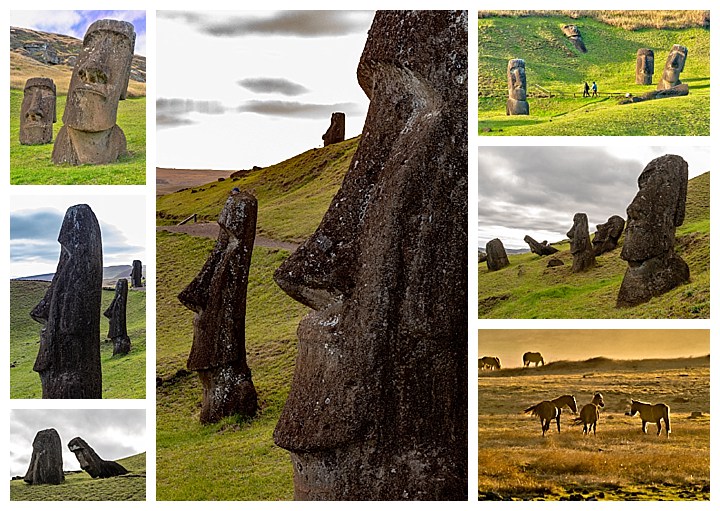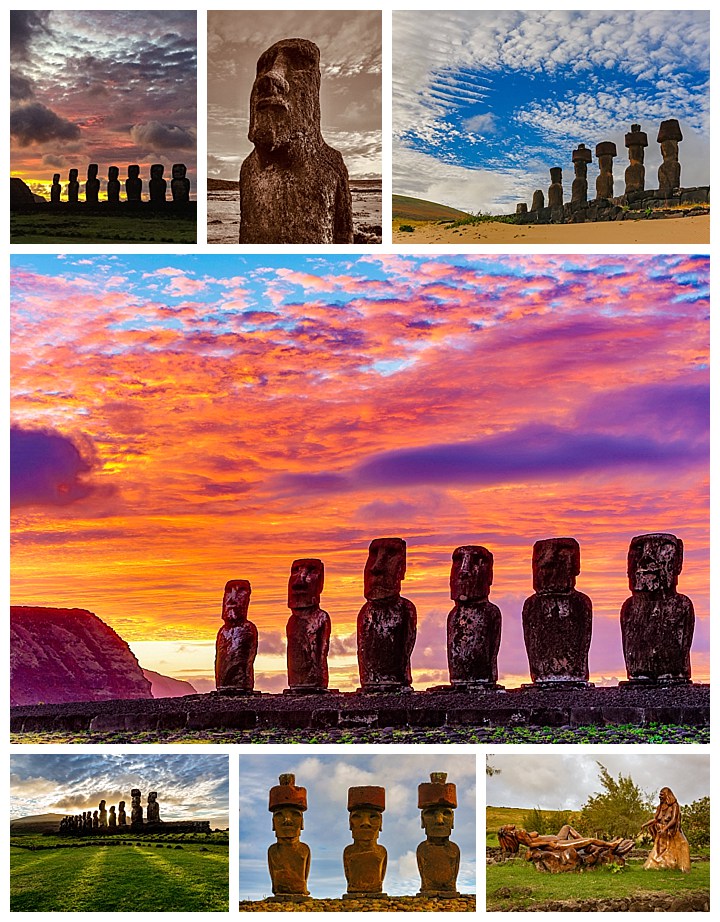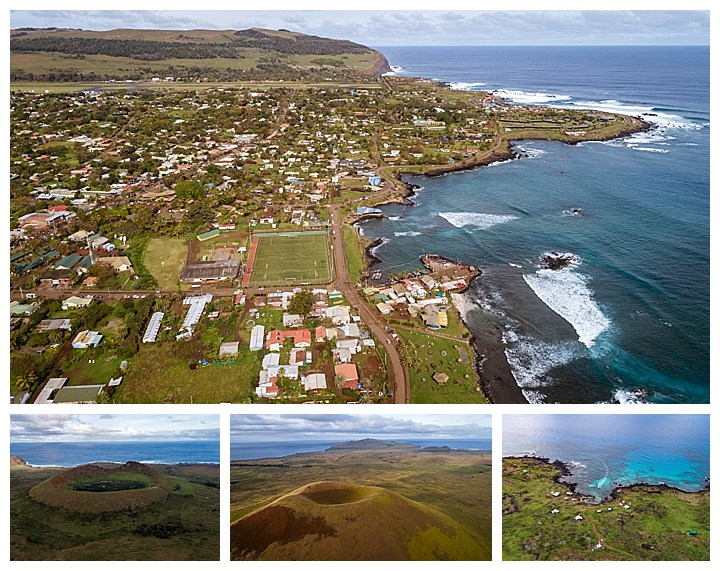
After viewing the total solar eclipse last week, we decided to spend a week on Easter Island, which was designated as a UNESCO World Heritage site in 1995. Since this island is owned by Chile, it is considered a domestic flight, despite taking 5 hours to reach this Polynesian island. Chile is the nearest landmass, but at 3526 km (2191 miles) away, Easter Island is the most remote populated land mass in the world.
We spent the entire week with Marc Ross Shields from Green Island Tours, going out at least once per day (other than the day we were rained out). Marc was easy going, relaxed, and made the entire week feel like we were visiting a long-time friend who lived on the island and knew his way around. If you visit Easter Island, we recommend using his tour company, which also specializes in star gazing. Marc is a photographer who has published two books on the island.
The island is most famous for the numerous stone statues (moai) carved by the Rapa Nui people that appear mysteriously over the entire landscape. The Moai are stone statues that represent the spirits of chieftains or high-ranking male ancestors, with most being placed facing inland with their backs to the sea. The official count is 887 moai, though we were told that the historian who established that number has since revised it to over 1100. with scores of them still located at the quarry. Many of the moai are broken, fallen over, underwater, or in hard to reach places though, so the typical tourist probably sees closer to 100 or so.
Many of the moai at the quarry show only the exposed heads, with the torso still unexcavated below the surface. When we asked how a massive stone statue could be half buried, we were told that the sculptors would carve the head, then dig a hole next to it. They would then tip the massive piece of stone into the hole, giving them access to carve the back of the statue, before rolling it down the hill to its final location, where it was to guard the village. The statues range from 13′ in height, to the largest of over 30′ weighing more than 80 tons each.

Rano Raraku volcano is the quarry where the moai were produced, being carved out of the hillside from Lapilli tuff (a solidified volcanic ash). The monolithic statues were all carved between 1100 and 1500AD, though it appears that several dozen were being made at a single time when all production suddenly stopped. Those are the ones scattered in various states of completion here at the quarry. In 1862, large numbers of Rapa Nui males were captured by Peruvian slave traders. The dozen that managed to return to the island brought smallpox, which dramatically reduced the remaining island population. Between 1774 and 1830, most of the moai had been toppled, possibly due to internal tribal warfare. Many of those were restored in the 20th century by European archeologists.
There are also many wild horses on the island. As we left the quarry late in the afternoon, we came across a small group of them backlit by the setting sun (lower-right).

We got up several mornings before sunrise to capture the morning light behind the moai. Our first sunrise was at Ahu Tongariki, where we saw 15 statues lined up, with the sunrise colors a phenomenal bright orange. We had overcast weather for most of the week, and only got “fire in the sky” colors a couple of times. Fortunately, sunrise occurs pretty late here, due to some timezone gerrymandering to keep Easter Island only two hours apart from the mainland (to make business between the island and mainland easier). Thus, sunrise occurs at a leisurely 8AM or later. ☺

We brought along our drone for some aerial views of the island. The Rapa Nui (local ancestral tribe) that rule the island have recently forbidden drones over most of the landscape, though they had been allowed a few years ago. The flight above was made over a part of the island rarely visited by tourists, and is one of the few legal places to fly.

Most days we also went to view the sunset at Ahu Tahai, Anakena Beach or along the Polycarpo Toro road on the island, usually with moai in the foreground. We had some settings to ourselves, but the more popular locations were shared with others there for the same reason (top row).

We have found the “local traditional dance” shows to be hit-or-miss. Some are tired and purely tourist come-ons. But then, there are some that we have enjoyed, such as the one on Sri Lanka, and the one we saw tonight in Hanga Roa on Easter Island. There are several such shows here, but we were told that Kari Kari cultural ballet was the most authentic, and that the dancers appeared to be quite spirited. They were right, and the show was quite enjoyable.
